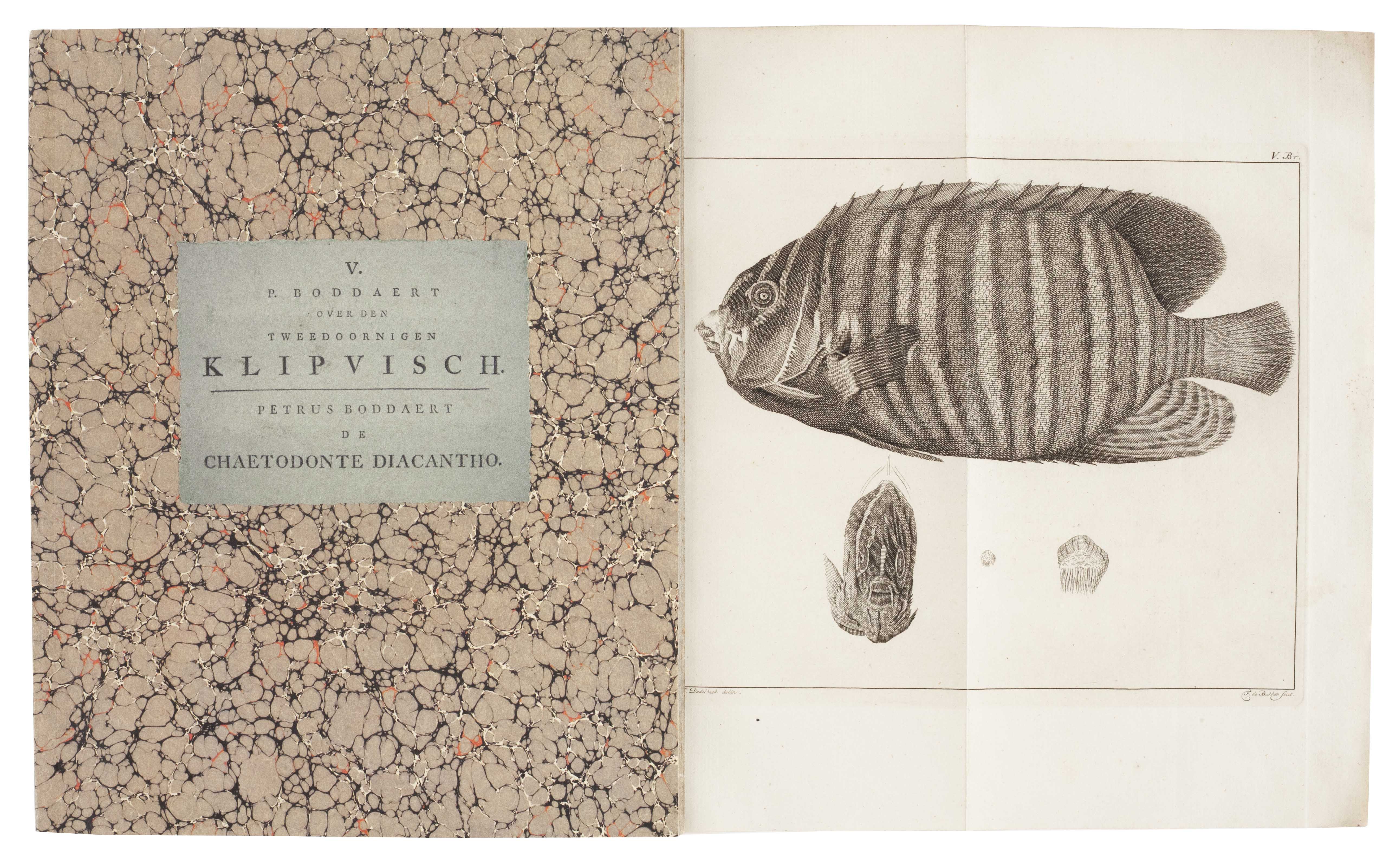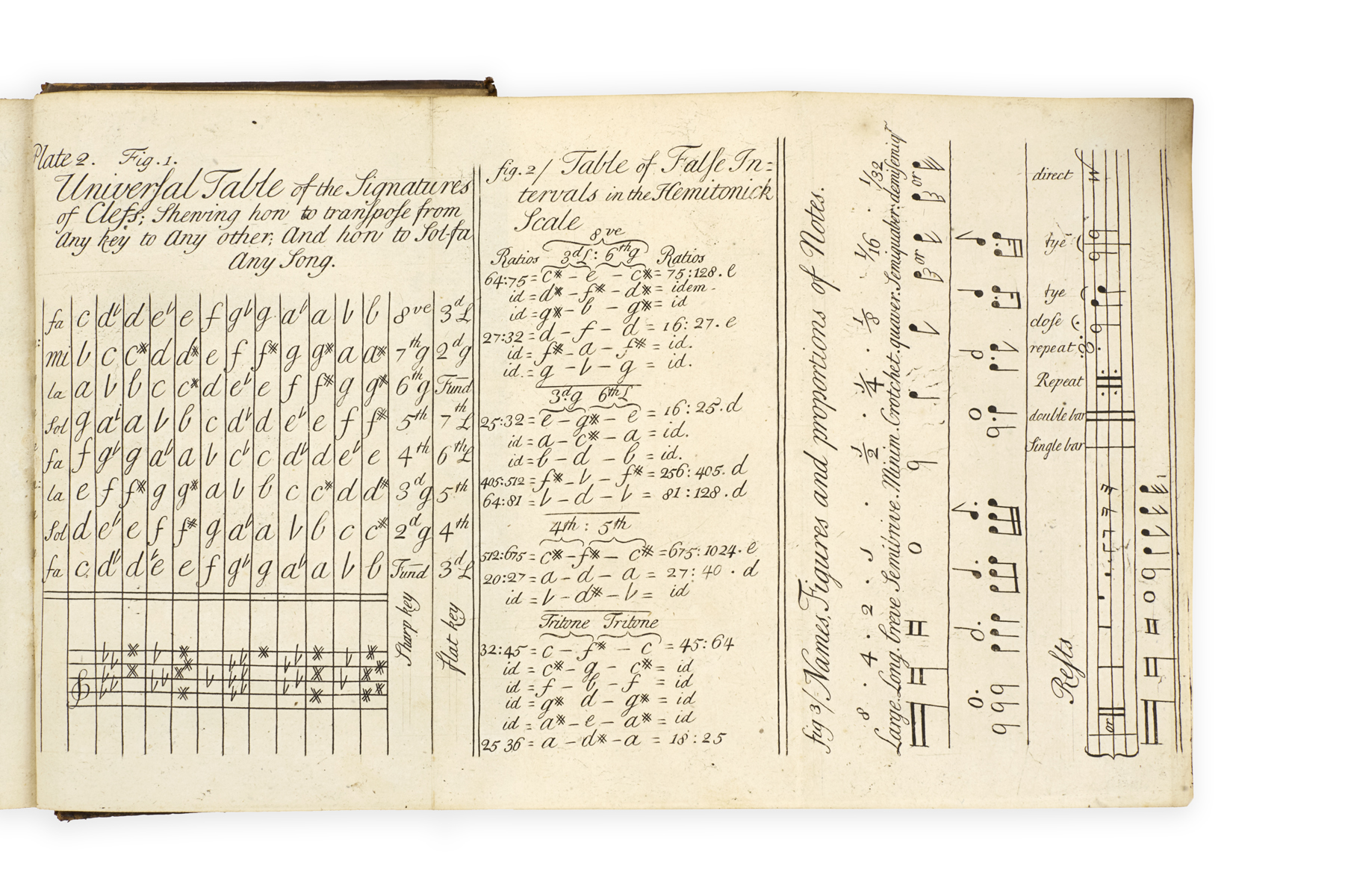

[SCHLOSSER, Johann Albert]. BODDAERT, Pieter.
Epistola ad … Hier. Dav. Gaubium … De chaetodonte diacantho, descripto atque accuratissima icone illustrata ex museo … Johannis Alberti Schlosseri …
Amsterdam, apud M. Magerum, 1772.
4to, pp. 43, [1], printed in Dutch and Latin on facing pages, with 1 folding engraved plate; a very good copy, printed on thick paper; bound in recent marbled wrappers with printed label on front cover.

Added to your basket:
Epistola ad … Hier. Dav. Gaubium … De chaetodonte diacantho, descripto atque accuratissima icone illustrata ex museo … Johannis Alberti Schlosseri …
First and only edition of Boddaert’s description of the Royal Angelfish found in the Schlosser natural history cabinet. This is the first monograph on the Royal Angelfish (and its first illustration), a now common species of coral fish in the Pacific and Indian Ocean.
H. O. Gaubius was a physician from Leiden.
Nissen, Zoologische Buchillustration, 436; Cobres 128.

